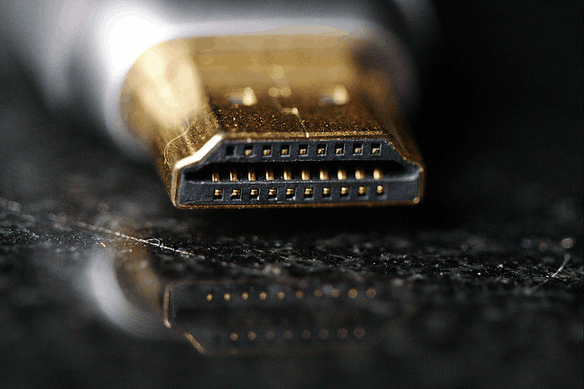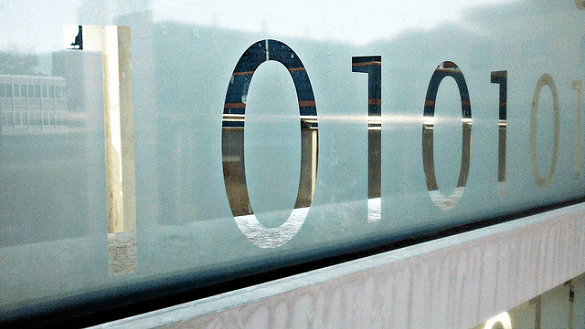To get the best out of your HD equipment, be it a nice widescreen television, a Blu-ray player, a PS3, or an HD streaming set-top box, you need at least one HDMI cable. Or more than likely, several HDMI cables. The thing is the pricing of HDMI cables varies wildly, from a few cents on one from the likes of Amazon to $100 or more from big-box retailers and 'boutique' manufacturers.
Why does the pricing vary so wildly? And is there any connection between the price paid and the quality of the product? If you've read the title then you'll already know the answers to these questions. And if you have already paid more than $10 for an HDMI cable then be prepared to find out just why you're a bit of an idiot. Or very gullible. Or just easily swayed by pushy sales assistants.
What Is HDMI?
Let's begin with the basics...
The acronym HDMI stands for High-Definition Multimedia Interface. It's the digital upgrade from analog cables of old such as RF and SCART. The first big consumer push for HDMI was when HD television sets started gaining popularity. Since then it has become the standard method of connecting many forms of digital equipment, from digital cameras to smartphones, from Blu-ray players to games consoles.
HDMI is an ever-evolving standard, with new specifications released as and when needed to support new technologies. Many people will own HDMI 1.3 cables which don't support the integrated Ethernet channel or 3D. The latest specification (at the time of writing) is HDMI 1.4b, so if you want to future-proof your digital connections as much as possible these are what you should currently be looking to buy.
Just don't spend more than $10 on an HDMI cable. Ever. If you do then you've been robbed, quite frankly.
Standard & Digital
As previously noted, HDMI is a standard. This means any and all HDMI cables essentially do the same job, regardless of cost. If the box says an HDMI cable is 1.3a then it meets the specifications that all HDMI 1.3a cables meet. And it doesn't matter whether it costs $1, $100, or even $1,000 (follow the link, seriously).
As previously noted, HDMI is also digital. The signal is delivered between the two devices connected via an HDMI cable in a digital format made up one ones and zeros. This means that assuming an HDMI cable isn't flawed from the outset it will deliver whatever is passed through it error-free and without degradation. If it is flawed from the outset then it will be more from being in a bad batch than being manufactured on the cheap.
Rip-Off Merchants
Those manufacturers producing the high-end (read expensive) HDMI cables are, in my opinion, nothing more than rip-off merchants. There are companies whose whole reason for being are to sell these overly-expensive HDMI cables. They produce 'boutique' products, apparently. Although I'm not sure what's so boutique about cables rolling off a continuous production line.
The retailers who try and sell these wares to consumers because of the high margins involved are also rip-off merchants. They prey on the vulnerable, the tech unsavvy, the nOObs, and those who believe whatever sales patter they have rammed down their throats. And when a salesperson is looking at adding a few dollars to his or her paycheck with commission they'll pull out all the stops to secure a sale.
Both of these remind me of the tonic sellers of the Wild West. They will talk you into handing over your cash, promise you the earth, and just hope you never discover the truth.
Paying A Premium
You may imagine there is a reason to pay the premium being charged here. But there really isn't. There is no discernible difference in what the lowest-priced HDMI cable you can buy can do and what the highest-priced HDMI cable can do. Both deliver whatever is fed in one end and back out the other end. And (especially over short distances) the variation in price will make no difference to anyone but the most-ardent audio/visual geeks.
In terms of build quality there may well be some differences, so the $100 cable may last longer. But how often do HDMI cables break anyway? And if a cheap one does break then you can replace it by spending just a few dollars. If an expensive one breaks then that's another $100 down the drain. With nothing to show for it.
Buying cheap also means you can upgrade to the newest specifications as and when needed without breaking the bank.
Conclusions
If you spend more than $10 on an HDMI cable then you need your head examining. And no argument can suggest otherwise. You're also the victim of companies, retailers, and salesman taking advantage of people not knowing about an emerging technology. So you're a fool I actually have some sympathy for.
This opens up a wider point that should see people educating themselves before heading out to buy whatever new gadget or piece of consumer technology they fancy splashing the cash on this month.
Do some research online, ask friends and family for opinions, and find out what your options are. Because if you don't, you'll end up not only wasting money but being called names by some random guy on the Internet. And surely no one wants to suffer that ignominy.
Image Credits: Images Money, Anonymous, Chris McClanahan, Laura Lewis, 401K





